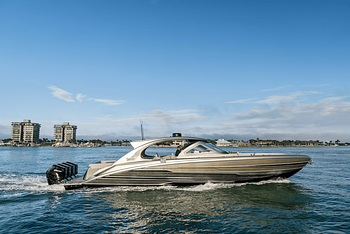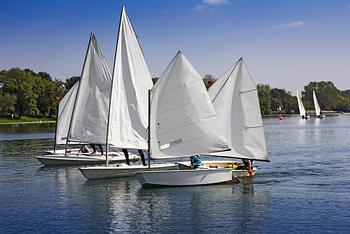For Under $5,000 you could travel back in time to a far simpler and less complicated time. An era without broadband, satellite TV and checking in on Facebook every hour. For $5,000 could buy you a little wooden boat complete with two cosy berths and a galley. Just let your mind relax and imagine it for a moment. The dry coarse creaking of the mooring rope as the wooden hull lifts and falls with the lapping tide, the scent of aged wood and varnish drifting and filling your senses with the aroma of lazy days gone by. Sounds perfect, doesn’t it?
Of course, like most things in life, wooden or classic boat ownership isn’t just about sailing on a millpond of nostalgic delight. There are a few storms fronts and sandbanks you’ll need to navigate along the way but don’t let that put you off.
Classic wooden boat ownership trains the soul in a way that no modern craft can. Tolerance, decisiveness and coolness under fire are all honed and refined and help to change an enthusiastic amateur into a far more complete sailor. So, read on and expand your horizons.

Definition of a wooden classic boat
Even if you know absolutely nothing about cars, you can always recognise a classic car. You may not know if it’s a Jaguar, MG or Morris Minor but there’s just something about it that tells you it’s a classic. Whether it’s the chromed grill or the patina of the paint finish, there’s just that certain something that screams classic at you. It’s the same with classic boats.
However, coming to an agreement over the precise definition is anything but simple. For example, an old working boat, or a boat of working type is not considered to be a “classic”, rather it is termed as being “traditional”. Not all wooden boats are classic and not all classics are wooden. In the same way that car designers frequently re-visit classic designs and re-vamp them for a new generation such as Volkswagen did with the eponymous Beetle, as do boat designers.
As interest in wooden boats has grown exponentially over the last decade, modern boat design has harked back to craft being built in more traditional styles, much to the chagrin of the purists.
In 2005, Classic Boat magazine surveyed their readership as to what was their all-time classic of classics. The results revealed the subjectivity of the question with the answers ranging from canoes and sailing yachts to steamers and fishing craft, from tug boats to warships, the range was all encompassing but with no precise consensus as to the meaning of the term “classic boat”. Probably the easiest way to approach the actual definition is to view it subjectively and with an open mind. Just rely on your gut feeling as you would with a classic car. Even if you don’t know why, you just know it’s a classic.
Reasons to buy a classic wooden boat
Firstly, classic boat ownership really can represent value for money. Unlike classic cars, classic boats can be some of the most undervalued vehicles on the planet. $20,000 could buy you a 30ft yacht, hand-made by a master craftsman, far below the starting price of the modern equivalent. There’s also a more tactile approach to classic wooden boat sailing which can really develops sailing skills in a way no contemporary boat will. The absence of modernity delivers a more “seat of the pants” sailing practice in the same manner that a 747 pilot would experience flying a Sopwith Camel biplane. And finally, the warm welcome and looks of envy received whenever mooring at a marina chocked full of anonymous white craft are impossible to put a price on.
Classic boat ownership is truly one of the few recreations that appeals at every level. The wide range of affordable boats available are within the budget of most sailors, starting at around $1,000 for a modest little clinker dinghy to $80,000+ for a cruising yacht. There really is something for everyone in the classic boat world.
Choosing your first classic wooden boat
As previously discussed, the range of classic wooden boats available is vast. As little as $500 could launch you into Swallows and Amazons fashion with an open wooden dinghy whilst if your pockets are somewhat deeper, $40 million could secure you a three-masted schooner! Ideally, a small 25ft cruising yacht would make a fine introduction into the world of classic boats. The main thing to do is to bear in mind exactly where, and with who, you want to sail and make your choice of boat appropriately. Ask yourself the following:
-
- River or sea
-
- Sail or engine
-
- Day sailing or river cruising
-
- Solo or with friends or family
-
- Budget
-
- Renovated or in need of restoration work
Taking these factors into account, as well as the standard considerations you would apply to any boat purchase, such as upkeep or mooring fees, will help you decide upon which type of craft is the one for you.
For some, sailing is a solitary affair, for others, it’s a more social recreation. For classic boat owners, there are a plethora of regattas and events all over the world. Rather than being competitive, many of these events are just a diverse range of sailors united by their love of classic wooden boats.
Types of classic wooden boats
Axe One Design
12ft clinker dinghy kept at a sailing club - $1,000-$5,000/ $200 per annum upkeep Large enough for two adults and one child Usually, open but can be made covered with a “tent over the boom” method
Day Boat
15ft daysailor kept on a trailer at home - $1,000-$10,000/ $200 per annum upkeep Large enough for four adults or a family Usually a canopy with sleep under on the side-benches. Some have small “cuddy” cabins for sleeping or storage
Weekend Yacht
19ft-22ft. $2,000-$30,000/ $500+ per annum upkeep Fixed keel of iron or lead and either inboard or outboard engines
Cruising Yacht
25ft-30ft. $4,000-$80,000/ $3,000-$5,000 per annum kept at a marina Typically sleeps four or more. Galley, heads, sometimes heating and hot and cold water. Ocean-going with a full range of navigation equipment, GPS and echo sounder, etc.
A few words of advice from the experts
Classic Boat magazine asked a few experts their advice on classic wooden boats and here’s what they had to say;
Gillian Nahum, Hambleden sales and charter
“Buy a boat that’s already in good condition. Keeping on top of the maintenance of a boat that’s sound is not such a big problem.”
Adrian Espin, Eastern yachts
“Go for something less than 25ft (7.6m). A 40-footer would be crackers. I advise buyers against it. There’s no point in a wooden classic unless you enjoy looking after wood, but if you do, and you know you’re handy, I wouldn’t say no to starting with a restoration. Just make sure you’re somewhere there are plenty of other people doing similar jobs. Read Classic Boat! And read some of the many good books out there.”
David Morris, Woodrolfe brokerage
“My advice would be to start off with a GRP classic that has wooden spars. If you find you enjoy looking after the wood, varnishing it etc, then move onto wood. And keep it small. Small boats, like 20-footers, are so much fun you may never trade up.”
Related Articles and Guides
19th Jul 2024
The World’s Best Yacht Brands
12th Jul 2024
Top Performance-Boat Brands, Where There’s Something For Everyone
28th Jun 2024
Best Center Console Boats: The Best Brands Across the Spectrum
23rd Jun 2024







